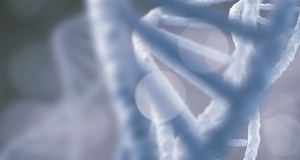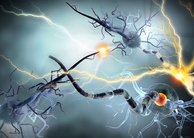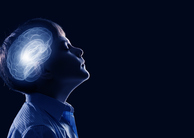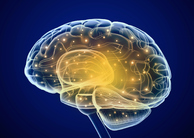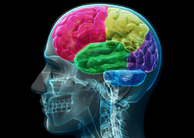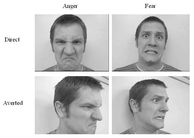Increases in the Prevalence of Autism Disorder: Exploring Biological and Socio-Environmental Factors
By
2014, Vol. 6 No. 09 | pg. 3/3 | « Biological or Socio-Environmental Factors?For a conclusion to be drawn about the prevalence of autistic disorder, the studies referenced must be cross-examined and discussed in the context of the nature vs. nurture debate. Nature is evaluated with a focus on the biological aspects of genetics; nurture is evaluated through the contribution of the socio-cultural environment. Cohort studies, including Rutter et al. and Liu et al. are longitudinal population-based cohort studies, seeking causal relationships between risk factors and autistic disorder. Participants with a known exposure are compared to those who have not been exposed, and observed over a period of time for the development of a disorder. The limitations are that cohort studies are time consuming and expensive. Although Rutter et al. was able to establish a direct correlation between length of institutionalization (social deprivation) and cognitive impairment, there is still some concern whether the quasi-autistic features were representative of a distinctive disorder, or simply a side effect of extreme social deprivation (Rutter et al., 2007). The improvement in cognitive impairment seen in those who had displayed quasi-autistic traits suggests the role of the environment in both onset of autism and the mitigation of its effects.King & Bearman (2009) conducted a retrospective case study to evaluate the increase in prevalence of autism associated with the change in diagnostic criteria. This methodology describes and analyses events and variables that change over a time period after they have occurred; selection bias is evident since the population in the California database might not be reflective of the entire population. Lastly, this type of retrospective study can assess prevalence, but cannot prove causation, since the events have already occurred before the study. It is important to consider any limitations related to study design across all the research articles examined in this paper. Rosenberg et al. (2009) used a cross sectional (one specific point in time) study design to measure concordance rates in twins. Although this observational study design is easy to complete in a short period of time, this study makes the equal environment assumption: that identical and fraternal twins raised in the same home experience equally similar environments, and can thus be discounted. Negating the effect of environmental factors decreases the reliability of the results. Sandin et al. (2014) progresses the evaluation of genetic inheritance with a longitudinal population-based cohort study. The risk of heritability was calculated by comparing participants with an autistic relative to those without. The study included data from the entire Swedish population who had equal access to health care and a similar evaluation of risk for autistic disorder. This increases the validity of the findings, and the large sample size minimizes bias due to sample selection, and participant follow up. Wang et al. (2009) used a case control study, which is an observational study comparing individuals with autism to normally developing controls from the same population. It is less expensive and requires less time to complete when compared to cohorts studies. In case control studies, matching of controls is extremely important, and having multiple controls makes the results easier to generalize. Wang et al. (2009) used samples from multiple groups with genetically matched controls; this increases the validity of the findings. An inherent flaw in the biological argument is the inability to establish causation. This means that a single gene responsible for autism had yet to be discovered, and merely correlation can be suggested. This in part is due to the diversity of genes discovered, and suggests that autistic disorder is not completely dictated by genetic factors; thus, environmental factors must also be taken into consideration. SummaryBiological factors are influential in the prevalence of autism, as twin studies, familial inheritance, and gene mapping of copy number variants provide persuasive links to autism. However, biological studies have been unable to locate a single genotype or biological marker responsible for autistic disorder. The latest research demonstrates that autistic disorder aggregates in families and communities, and the individual risk increases equally by genetic relatedness and the environment. Environmental factors are also important since social deprivation was associated with 9% of the prevalence of autistic disorder in Romanian children adopted in the U.K. (Rutter et al., 2007). Both the changing diagnostic criteria and social influences of information diffusion have likely led to the increasing identification of autism and thus an apparent increase in its prevalence. ConclusionAlthough the underlying causes of autism remain unknown, the prevalence of the disorder can be linked to multiple biological and environmental factors. This paper highlights three major unresolved questions pertaining to the investigation: Is autism caused by the interaction of genetic and environmental factors? What are the non-shared environmental factors that increase the risk of autism? Lastly, which positive environmental influences help mitigate the cognitive deficits of autism? Overall, this paper finds that both biological and environmental factors have contributed to the increasing prevalence of autism. However, there is insufficient evidence to categorically prove the exclusive role of either genetics or the environment in the causation of autism. Most likely, both biological and environmental have a role to play in the development and identification of autistic disorders. ReferencesAbrahams, B., & Geschwind, D. (2008). Advances in autism genetics: on the threshold of a new neurobiology. Nature Reviews Genetics, 9(5), 341--355. CDC - Facts about Autism Spectrum Disorders - NCBDDD,. (2014). Facts About ASDs. Retrieved 25 March 2014, from http://www.cdc.gov/ncbddd/autism/data.html Diagnostic and statistical manual of mental disorders: DSM-V-TR. (2013) (5th ed., Washington, DC, U.S.A. http://dsm.psychiatryonline.org/content.aspx?bookid=556§ionid=41101757#103436574). Folstein, S., & Rutter, M. (1988). Autism: Familial aggregation and genetic implications. Journal Of Autism And Developmental Disorders, 18(1), 3--30. Ganz, M. (2007). The lifetime distribution of the incremental societal costs of autism. Archives Of Pediatrics & Adolescent Medicine, 161(4), 343--349. Grinker, R. (2014). Unstrange Minds :: Diagnostic Criteria for Autistic Disorder through the years. Unstrange.com. Retrieved 5 November 2013, from http://www.unstrange.com/dsm1.html Happé, F., & Frith, U. (1996). The neuropsychology of autism. Brain, 119(4), 1377--1400. Hill, N. (2013). Autism Awareness: Changes in DSM-V. Practice Wisdom. Retrieved from http://practicewisdom.blogspot.com.au/search/label/Autism Järbrink, K., & Knapp, M. (2001). The economic impact of autism in Britain. Autism, 5(1), 7--22. Kanner, L. (1943). Autistic disturbances of affective contact. Nervous Child, 2(3), 217--250. Kaufmann, W. (2012). DSM-5: The New Diagnostic Criteria for Autism Spectrum Disorders. Presentation, the 2012 Research Symposium - Autism Consortium, Boston, MA, October 24, 2012. King, M., & Bearman, P. (2009). Diagnostic change and the increased prevalence of autism. International Journal Of Epidemiology, 38(5), 1224--1234. Landrigan, P. (2010). What causes autism? Exploring the environmental contribution. Current Opinion In Pediatrics, 22(2), 219--225. Lathe, R. (2006). Autism, brain, and environment (1st ed.). London: Jessica Kingsley. Lavelle, T., Weinstein, M., Newhouse, J., Munir, K., Kuhlthau, K., & Prosser, L. (2014). Economic burden of childhood autism spectrum disorders. Pediatrics, 133(3), 520--529. Liu, K., King, M., & Bearman, P. (2010). Social influence and the autism epidemic. AJS; American Journal Of Sociology, 115(5), 1387. Rosenberg, R., Law, J., Yenokyan, G., McGready, J., Kaufmann, W., & Law, P. (2009). Characteristics and concordance of autism spectrum disorders among 277 twin pairs. Archives Of Pediatrics & Adolescent Medicine, 163(10), 907--914. Rutter, M., Kreppner, J., Croft, C., Murin, M., Colvert, E., & Beckett, C. et al. (2007). Early adolescent outcomes of institutionally deprived and non-deprived adoptees. III. Quasi-autism. Journal Of Child Psychology And Psychiatry, 48(12), 1200--1207. Sandin, S., Lichtenstein, P., Kuja-Halkola, R., Larsson, H., Hultman, C., & Reichenberg, A. (2014). The Familial Risk of Autism. JAMA, 311(17), 1770. doi:10.1001/jama.2014.4144 Spitz, R. (1945). Hospitalism: An Inquiry Into the Genesis of Psychiatric Conditions in Early Childhood. Psychoanalytic Study Of The Child, 1, 53-74. Strathearn, L. (2009). The elusive etiology of autism: nature and nurture?. Frontiers In Behavioral Neuroscience, 3. Walsh, N., & Hurley, E. (n.d.). The good and the bad science of autism (1st ed., pp. 28-37). Wang, K., Zhang, H., Ma, D., Bucan, M., Glessner, J., & Abrahams, B. et al. (2009). Common genetic variants on 5p14. 1 associate with autism spectrum disorders. Nature, 459(7246), 528--533. Suggested Reading from Inquiries Journal
Inquiries Journal provides undergraduate and graduate students around the world a platform for the wide dissemination of academic work over a range of core disciplines. Representing the work of students from hundreds of institutions around the globe, Inquiries Journal's large database of academic articles is completely free. Learn more | Blog | Submit Latest in Neuroscience |











